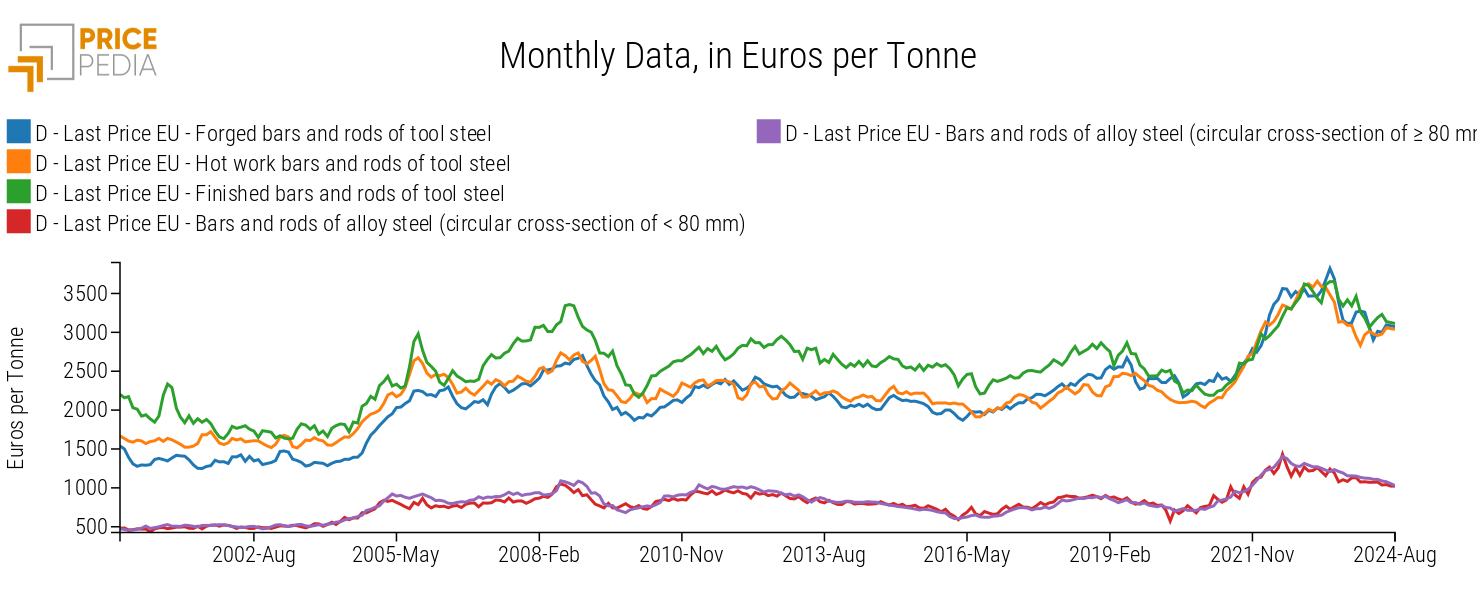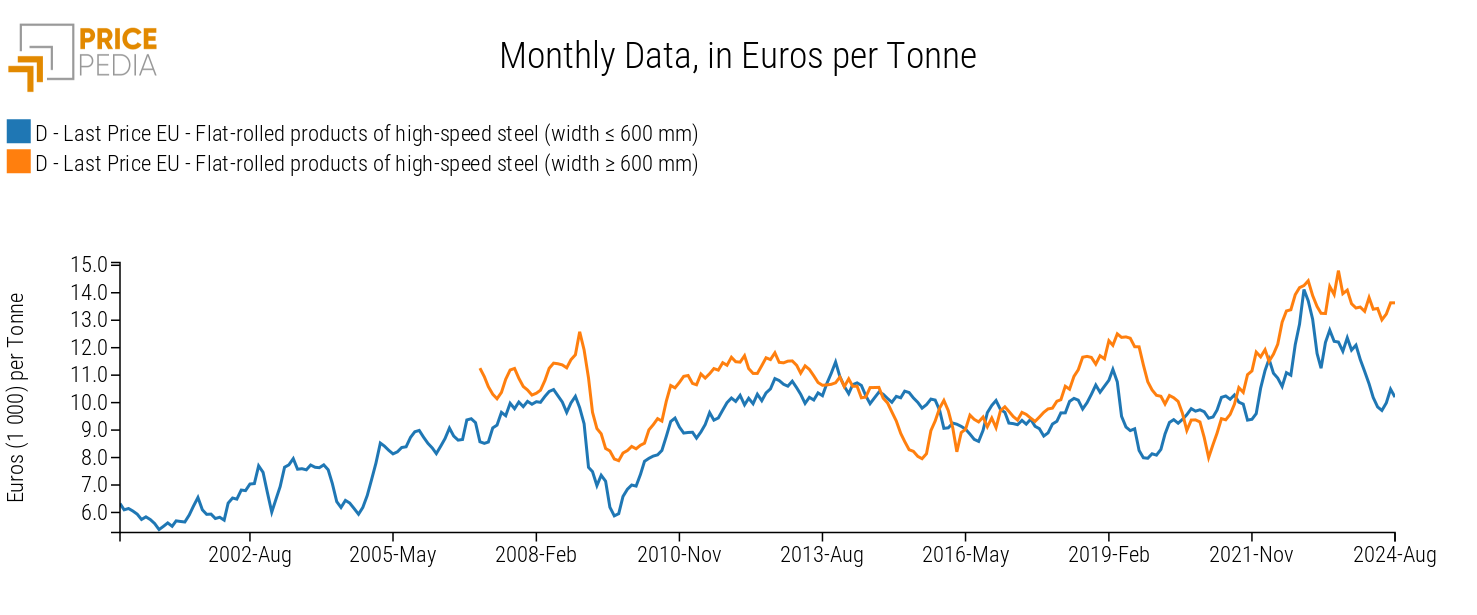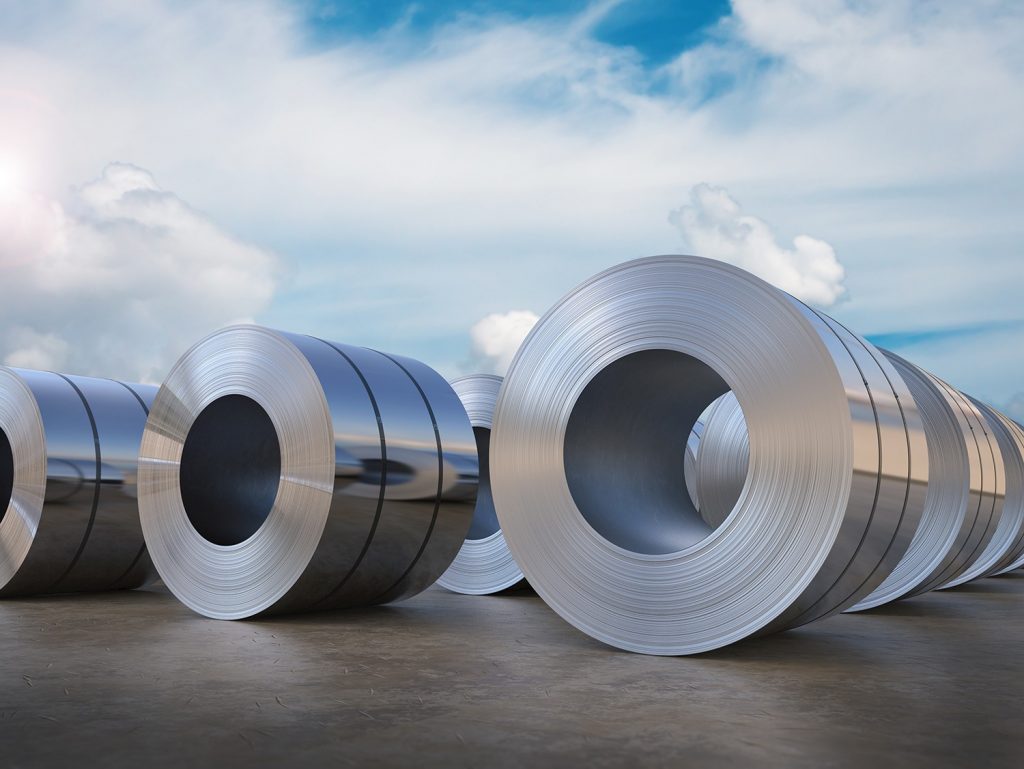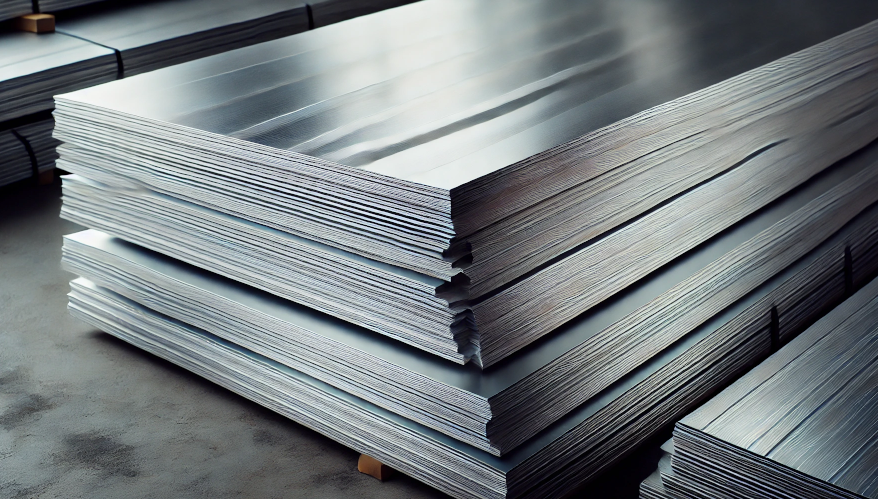September 2024 update on special steel prices
Price levels are determined by the characteristics of the steel
Published by Pasquale Marzano. .
Ferrous Metals Price DriversFor over 24 months, steel product prices have been characterized by a downward trend. From the peak in May 2022 to August 2024, overall prices have fallen by more than -30%. This trend has affected all types of products (flats, longs, carbon steels, alloy steels, stainless steels, etc.), albeit with varying degrees of intensity.
This article focuses on the category of special steels, recently expanded with new products. Their being special depends on physical and/or chemical characteristics, as well as their use. Special steels can also be either carbon or alloy steels. This category of steels includes:
- free-cutting steels;
- tool steels;
- high-speed steels.
Free-Cutting Steels
Free-cutting steels are a category of steels specifically designed to be used in automated machining processes, such as the production of mechanical and structural components through automatic machine tools.
A comparison of price levels shows that the price of free-cutting steels is determined by applying a margin to the base product. The table below shows the average annual levels, expressed in euros per ton, of free-cutting steels and base products listed in PricePedia.
Table of prices for free-cutting steels and base steels, expressed in €/Ton
| 2019 | 2020 | 2021 | 2022 | 2023 | 2024 | |
|---|---|---|---|---|---|---|
| D-Last Price EU-Blooms | 420 | 382 | 535 | 658 | 550 | 516 |
| D-Last Price EU-Semi-finished products of free-cutting steel (C ≥ 0,25%) | 623 | 527 | 712 | 1088 | 837 | 735 |
| D-Last Price EU-Wire rod (C > 0,75%) | 536 | 472 | 723 | 973 | 714 | 674 |
| D-Last Price EU-Non-alloy free-cutting steel wire rod | 632 | 544 | 782 | 1151 | 838 | 785 |
| D-Last Price EU-Bars (circular cross-section) | 697 | 606 | 804 | 1086 | 950 | 896 |
| D-Last Price EU-Hot work bars and rods of free-cutting steel | 663 | 570 | 821 | 1200 | 971 | 847 |
| D-Last Price EU-Bars and rods of free-cutting steel | 888 | 784 | 1059 | 1485 | 1242 | 1060 |
Price trends are aligned across the different products: 2020 saw a decline, followed by exceptional increases during the years 2021-2022. In 2023 and 2024, prices fell back to lower levels, but still above the average levels recorded in 2019.
Except for Hot work bars and rods of free-cutting steel, which have levels similar to Bars (circular cross-section), depending on the products considered, the margin between base product and free-cutting steels can range from a minimum of 15% for wire rod, to a maximum of 45% for semi-finished products. In the case of free-cutting steel bars, the margin is determined not only by the characteristics of the free-cutting steel but also by the fact that they have been finished or cold-worked, thus presenting a higher level compared to simply hot-worked free-cutting steel bars.
Tool Steels
Tool steels are a category of hard steels (i.e., with a carbon content between 0.51% and 0.75%) used to produce tools. It includes various types of alloy steels designed to maintain properties such as excellent hardness, wear resistance, and dimensional stability.
Unlike free-cutting steels, they have relatively high levels compared to the base product, as can be seen in the chart below.

The chart shows the different levels of the products considered. Tool steel bars are much more expensive than alloy steel bars. This difference is explained by the characteristics and use of the former compared to the latter.
Additionally, it can be seen that in recent years, the prices of alloy steel bars have shown a clear downward trend, while tool steel bars have experienced less severe decreases and remain at higher levels.
High-Speed Steels
A very important subcategory of tool steels is high-speed steels (HSS). These are a class of alloy steels designed to maintain high hardness and wear resistance even at elevated temperatures, unlike more common tool steels. These steels are primarily used for manufacturing cutting tools, such as milling cutters, drills, and saws, which operate at very high cutting speeds.

Due to their technical characteristics, high-speed steels have even higher levels than tool steels. Prices for narrow and wide flat products of high-speed steels tend to have similar levels and dynamics over the long term.
In the most recent period, narrow flats of high-speed steels have experienced a sharper decline than wide flats, which remain just below the historical highs recorded in July 2023.
Do you want to stay up-to-date on commodity market trends?
Sign up for PricePedia newsletter: it's free!
Economist and data scientist. At PricePedia he deals with the analysis of commodity markets, forecasting models for raw material prices and management of reference databases.


